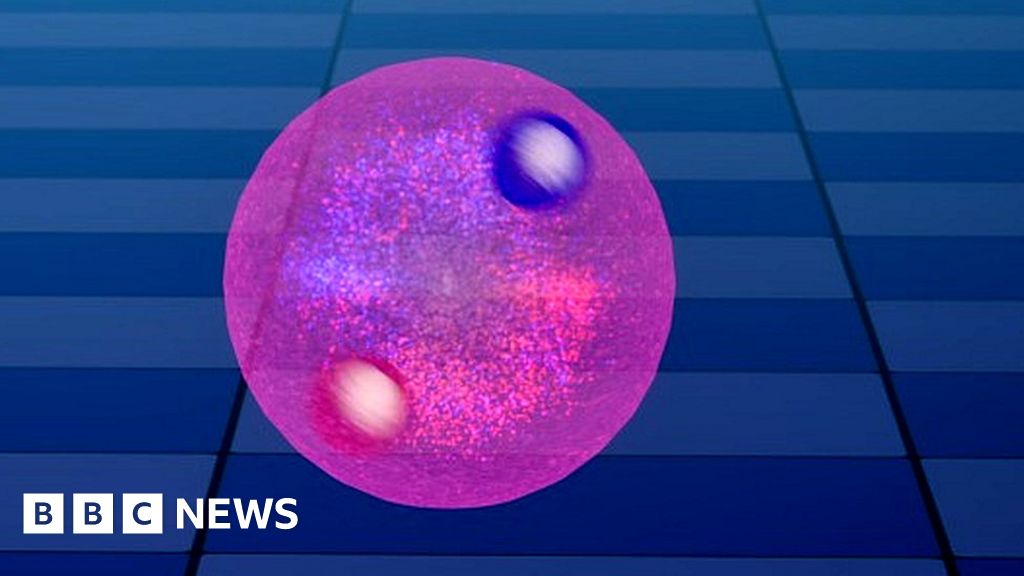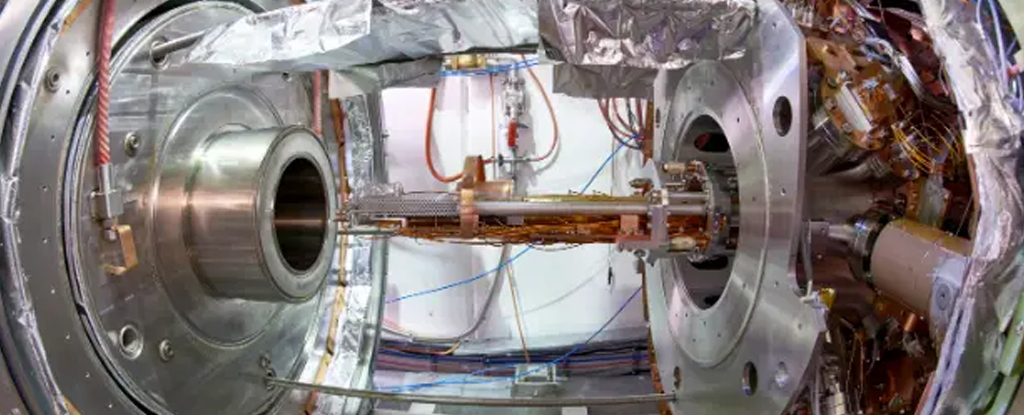"Antimatter: Scientists freeze positronium atoms with lasers."
Whoa.
"Positronium" has a negatively charged electron and a positively charged antimatter electron, which is called a positron. A regular hydrogen atom is made up of a positively charged proton and negatively charged electron.
So you get something like an atom, with a negatively charged electron and a positively charged particle, it's just that the positively charged particle is an antielectron (positron) instead of a proton. And because an antielectron (positron) has the same mass as a regular electron, the combination is lighter than a proton-electron pair, also known as a hydrogen atom.
I didn't know positronium even existed until I read this (you all have probably know for ages, huh?) so I did some digging to learn more about it. The way the process works is, first the "atom smasher" (really subatomic particle smasher) at CERN smashes subatomic particles together, and if the collisions are sufficiently high-energy, some of that energy (according to the famous E = mc^2 formula) gets converted into matter -- and not just any matter but particle-antiparticle pairs.
The next step is to slow them down. CERN has an Antiproton Decelerator which evidently can also slow down antielectrons (positrons).
"The Antiproton Decelerator is a ring composed of bending and focussing magnets that keep the antiprotons on the same track, while strong electric fields slow them down. The spread in energy of the antiprotons and their deviation from their track is reduced by a technique known as 'cooling'. Antiprotons are subjected to several cycles of cooling and deceleration until they are slowed down to around a tenth of the speed of light. A newer deceleration ring, ELENA (Extra Low ENergy Antiproton), is now coupled with the Antiproton Decelerator. This synchrotron, with a circumference of 30 metres, slows the antiprotons even more, reducing their energy by a factor of 50, from 5.3 MeV to just 0.1 MeV. An electron cooling system also increases the beam density. With ELENA, the number of antiprotons that can be trapped increases by a factor of 10 to 100."
The next step involves trapping the antielectrons in a Penning-Malmberg trap. This is complicated. Let's just say it works by using a combination of magnetic and electric fields to control the trajectory of the particles.
The next step involves producing positronium by combining the antielectrons (positrons) with regular electrons. This is done by directing them into silicon (silicon dioxide) with special "nanochannels" in it. I don't understand how this works. You would think funneling a boatload of antimatter into regular matter would just cause the antimatter and regular matter to meet and annihilate. But the silicon dioxide with the "nanochannels" is "porous" in such a way that a "quantum confinement" effect takes place that allows the antielectrons (positrons) to combine with regular electrons.
Finally we get to the step this news article is about: the laser cooling.
The way laser cooling works is by directing lasers at a material from from all 6 directions: all 4 sides plus above and below. The laser light is at a frequency that matches an energy transition of the atom. If positronium can be called an "atom". It can be treated like an "atom" for laser cooling purposes. Atoms have energy levels and when light comes in at the same frequency as a transition between energy levels, the atom can absorb the energy, in the form of absorbing a photon, and make the energy transition. Later it can "fall back" to the lower energy state and re-emit the photon. The key is that the atom absorbs light from a particular direction but emits it in a random direction. Because absorbing and emitting photons changes the momentum of the atom, this reduces the momentum of the particle in the direction of the laser. By doing lasers in all 6 directions, a cooling effect can be achieved on the atoms. In this experiment they specifically say they used a alexandrite laser that produces 243-nanometer wavelegth light, that corresponds to the transition between the ground state and the next energy level above the ground state.
The cooling effect is further enhanced with a Doppler effect. When an atom is moving towards a laser, light that it emits is blueshifted, according to its velocity. The same is true of light that it absorbs. By tuning the laser to a frequency slightly higher (or alternatively, to a wavelength slightly lower) than the frequency normally absorbed by the atom, the setup can be made so the laser's photons are only absorbed by atoms moving towards the laser.
In this experiment they reported they managed to drop the temperature of the positronium from 380 kelvin to 170 kelvin. By human standards, that means going from very hot (225 Fahrenheit / 105 Celsius) to extremely cold (-150 Fahrenheit / - 100 Celsius).
They want to make it even colder. Maybe that is made difficult by the fact that positronium usually only lasts for 142 nanoseconds before it annihilates into 3 gamma rays?
Oh wait, did I say positronium has only one ground state? It actually has two: one that lasts 142 nanoseconds and one that lasts 125 picoseconds. Remember, your metric prefixes go milli-, micro-, nano-, pico-, each one a factor of 1,000 smaller than the next. All the laser cooling was done using the long-lived ground state, the 142 nanosecond one (which is called 1^3 S -- the other is called 1^1 S. The laser cooling was done using the 1^3 S to 2^3 P transition.)
What does all this portend for the future?
Being able to sufficiently supercool positronium would enable experiments with precision spectroscopy on antimatter, measuring all the light that gets emitted from all the energy level transitions with extreme precision. This would enable testing of the QED theory (quantum electrodynamics) to an unprecedented level. "Bound state" QED, where you have particles bound together, such as here where we have an antielectron (positron) and a regular electron together, predicts these energy transitions using the universe's fine structure constant (that dimensionless constant you've heard of that is approximately 1/137). So this would enable deep testing of QED and precision measurement of the fine structure constant, as well as matter-antimatter symmetry, because we could see if the spectra for antielectrons (positrons) is the same as regular electrons.
You would think the spectra for antielectrons (positrons) would be exactly the same as regular electrons, and current Standard Model theory predicts it will. But, matter and antimatter are not always perfectly symmetrical mirror images of each other. In fact it's obvious they can't be, because we live in a universe with matter, a consequence of an asymmetry between matter and antimatter during the big bang.
If you're wondering why the material needs to be super cold for high precision spectroscopy, it's because the same Doppler effect mentioned earlier causes spectral lines to spread out when a material has a lot of kinetic energy and along with that, a lot of variation in the velocities of the particles.
Finally, there's the possibility of a gamma-ray laser. So, there's a theory that if you could cool positronium all the way down to being a Bose-Einstein condensate, then the "atoms" of positronium would become coherent in such a way that when they annihilate and release their 3 (in the case of the long-lived 1^3 S ground state positronium) or 2 (in the case of the short-lived 1^1 S ground state positronium) gamma rays, the gama rays can stimulate other "atoms" of positronium to annihilate as well. Bose-Einstein condensate is a state of matter near absolute zero in temperature where atoms enter the same quantum state and share a wave function. This would result in the emission of coherent gamma-ray light -- a gamma-ray laser, in other words. A gamma-ray laser has never existed before.


